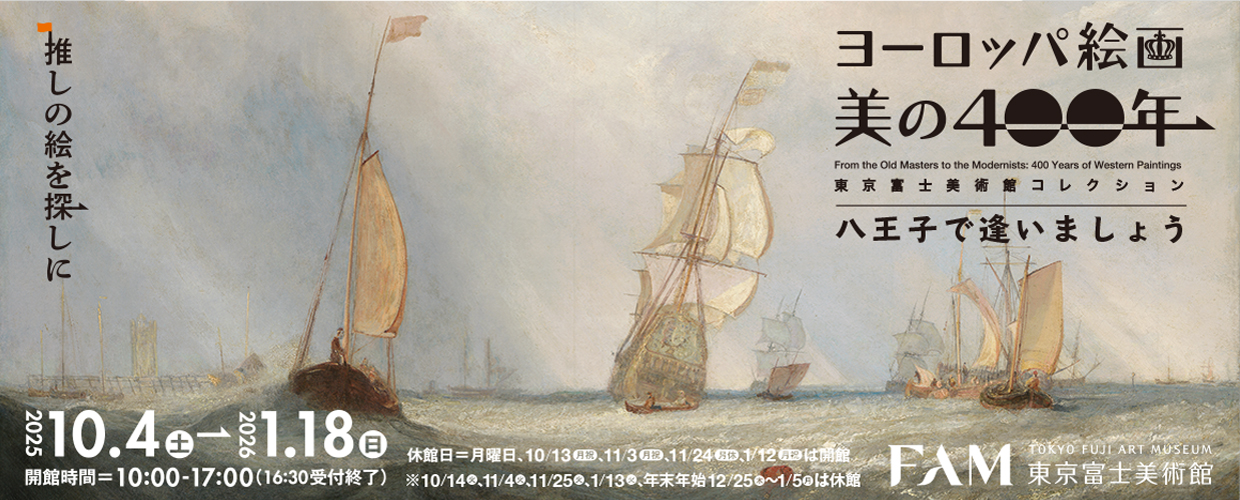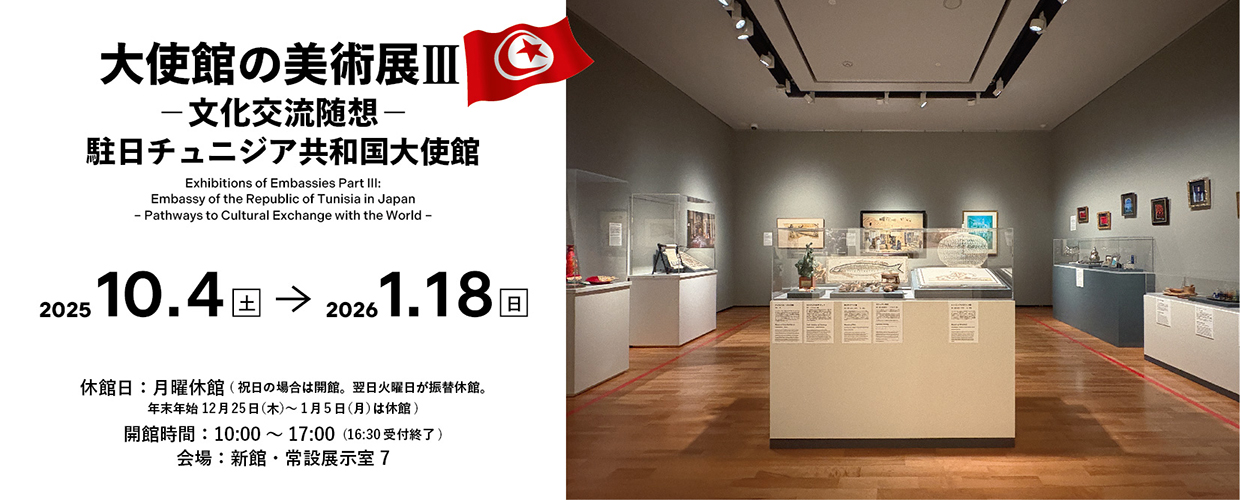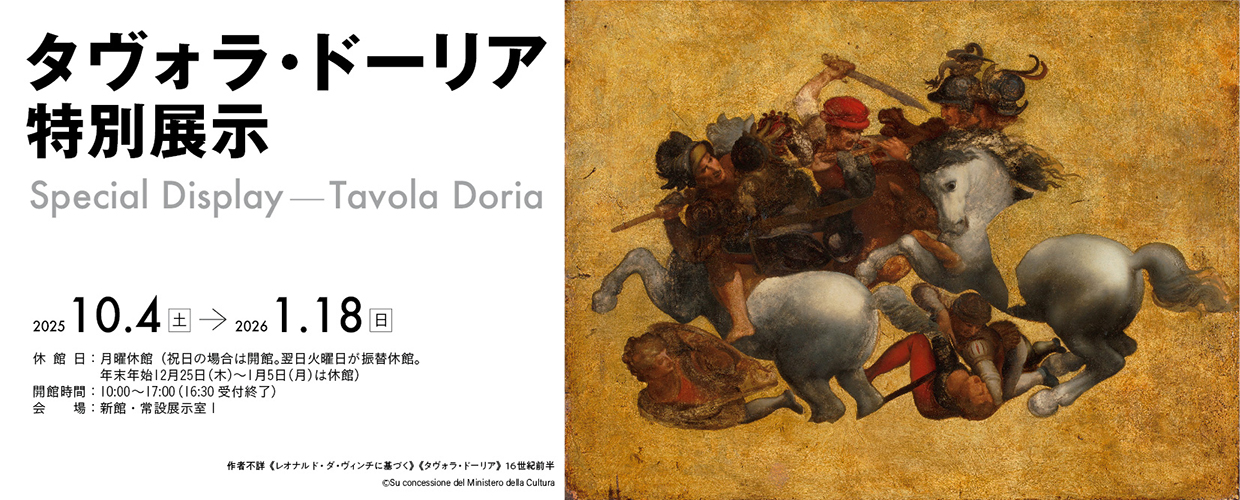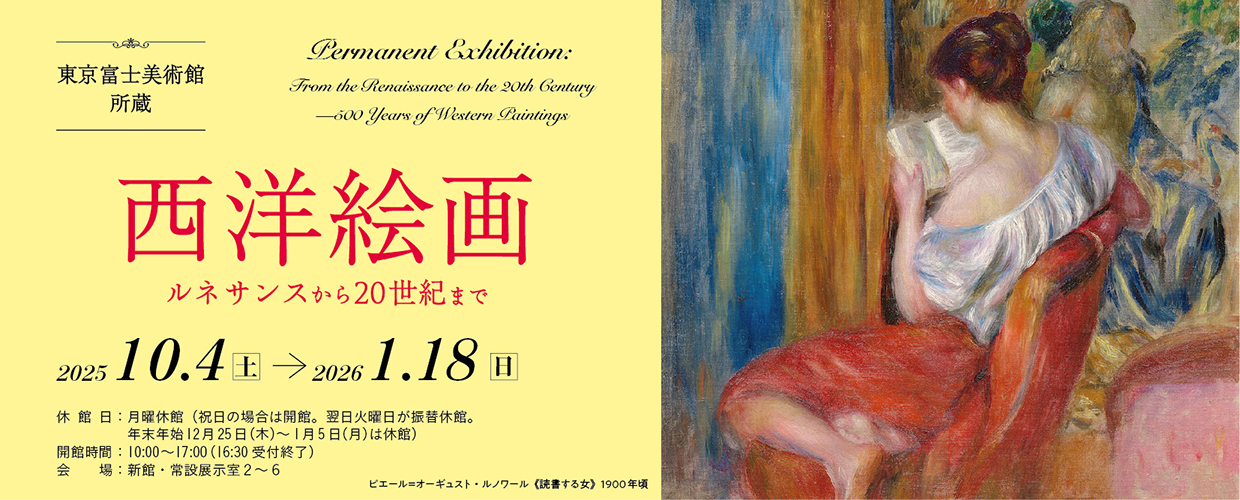Momoyama-Edo Period (17th c.)/Lacquered wood
H 5.5 cm, W 20.6 cm, D 22.8 cm
SUMMARY
This writing box is a rounded rectangular shape with a raised lid. Both the inside and outside of the box are decorated in flat and raised maki-e on the gold nashi-ji foundation. The top of the lid has phoenix birds and paulownia trees while inner area of the lid has pine trees, waterfalls, mountains, and water. Bamboos are depicted inside the box. A pair of phoenix birds are depicted on the top of the lid is a pair. They stand near the water, and thus switch canes and Chinese arrowheads are depicted with the birds. Gold flakes are used to depict paulownia flowers while silver flakes are used on the female tail and rocks. Gold and silver kirikane (cut metal) is used in the tree trunk, the body of the female phoenix, rocks, and clouds. On the back of the lid, silver flakes are used to depict a cove and beach. Gold and silver kirikane is used in rocks and clouds while the water-fall is depicted in silver maki-e. Inside the box, a water-drop is depicted using ja-no-me kuyo (nine circle) symbol in high-relief on the nanako-ji foundation next to an inkstone. The phoenix (feng huang) is a sacred bird originating in China with feng representing a male bird and huang representing a female one. Classic of Poetry says that the paulownia tree grows where the phoenix cries and stares. The phoenix only lives on the paulownia trees and eats only bamboo fruits. In Japan, section 1144 of Kazarisho (Record of Custom and Lore) describes that the emperor always wore a robe of korozen (light brown) color with the phoenix, bamboo, and paulownia trees, which is believed to be indicating the link between the phoenix and the emperor. That is why this writing box applies the phoenix and the paulownia trees on the top of the lid and the bamboos on the inside of the box.
INFORMATION

Friday, October 8 - Sunday, November 14, 2021
From the Tokyo Fuji Art Museum Collection: “THIS IS JAPAN” Eternal Japanese Art Oita Art Museum (Oita, Japan)
Sunday, August 25 - Sunday, September 29, 2019
This Is Japan In Kyoto From The Tokyo Fuji Art Museum Collection The Museum of Kyoto (Kyoto, Japan)
Wednesday, March 15 - Friday, May 12, 1995
Treasures of Japanese Art from the TFAM Collection Inter-American Development Bank, Cultural Center (Washington D. C., USA)
Sunday, January 26 - Sunday, March 22, 1992
Treasures of Japanese Art from the TFAM Collection Kunstlerhaus (Vienna, Austria)
Saturday, August 10 - Sunday, October 20, 1991
Behind Golden Screens: Treasures of Japanese Art from the TFAM Collection – An Official Event of Japan Festival ’91 and the Edinburgh Festival National Museum of Scotland (Edinburgh, UK)
Thursday, February 22 - Sunday, April 1, 1990
Treasures of Japanese Art from the TFAM Collection Sao Paulo Art Museum (Sao Paulo, Brazil)
Tuesday, May 3 - Wednesday, August 24, 1988
Eternal Treasures of Japan: Japanese Art Collection from the TFAM Collection Institute of France, Jacquemart-Andre Museum (Paris, France)
EXPLORE

You can search and browse content on a platform across museums and archival institutions nationwide, and create My Gallery (online exhibition).





